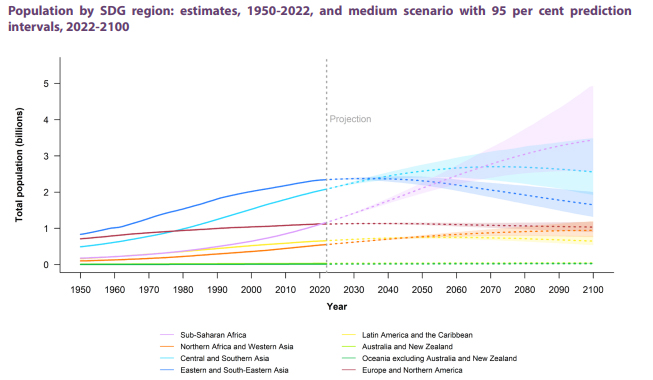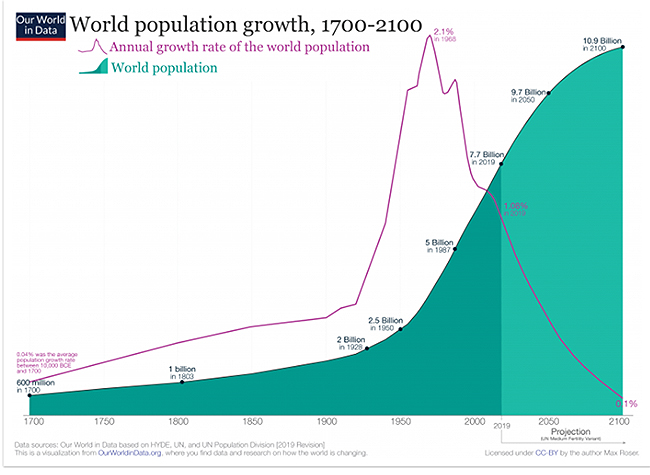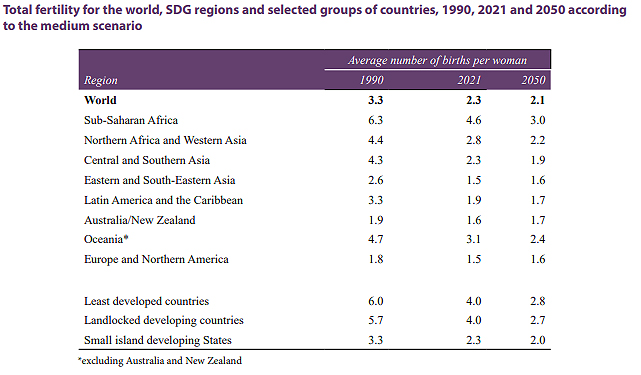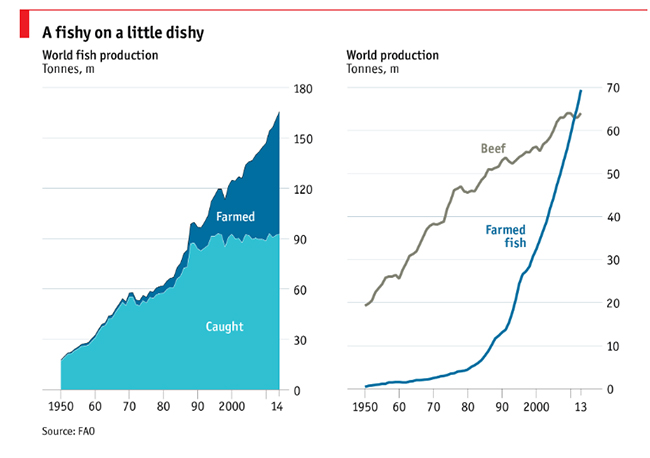
One of the things that the Russian invasion of Ukraine has highlighted is the relatively fine balance the global food supply walks.
Both countries are major grain producers which is arguably the most important of the feed staples for people and spills over to animals. Much of the most urgent requirements for the grain has been to the African continent.
It got me thinking as to where the biggest growth in population is going to occur in the decades ahead and how secure would be food production.
Up until February 24th this year climate would have been seen as the major food security threat, but Putin altered that at least temporarily however, once the Ukraine issues are resolved and the region gets back to some sort of equilibrium, climate will yet again achieve more prominence.
When it comes to population growth in the coming decades while several other regions will begin to experience decreasing population numbers Sub-Saharan Africa will account for most of the growth of the world’s population. Sub-Saharan Africa is projected to become the most populous of the eight geographic regions in the late 2060s, surpassing both Eastern and South-Eastern Asia and Central and Southern Asia in size and it could see its population reach 3.44 billion by the end of the century.

Source: World Population Prospects 2022, United Nations.
It hits its peak 30 -40 years after most other regions have become to decline and nearly 80 years after Eastern and South Eastern Asia (Includes China) have been declining. Forecasts show that it takes up to this point (year 2100) before the total global population begins to decline.

Source: World Population Growth.
Not surprisingly given the countries that make up the Sub-Saharan region which contains many of what are classified as low-income countries, population growth is driven by ‘natural increase’ while wealthier countries have had their populations maintained, or at least declines slowed, by the arrival of migrants.

Source: World Population Prospects 2022, United Nations.
Given that the usually accepted figure to maintain a population is around 2.1 births per women the table below shows the wide gulf that is occurring between some regions (Note New Zealand and Australia’s inclusion).

Source: World Population Prospects 2022, United Nations.
While all countries are going to be affected by climate change, Sub-Saharan Africa is expected to feel greater impacts, partly due to its lack of ability to mitigate the effects and also being impacted as much as any region with increased heat (+1.5o to +4oC) depending upon which scenario is used, and reduced water availability. All of these issues magnified by the increasing population.
Nigeria is expected to have a greater population than China.
At the moment when all is going well, there is enough food produced to feed everybody, although over 800 million suffer from severe malnutrition while ironically over 500 million are considered obese. Most of the malnutrition is a result of poor logistics, poverty and dysfunctional governments.
While the production of staple foods, largely crops, have seen steady increases in productivity, lately production has stagnated. Yields of important crops such as rice and wheat have now stopped rising in some intensively farmed parts of the world, a phenomenon called yield plateauing. While there is potential to utilise ‘best practice’ in developing areas of the world, climate challenges may mean this is going to be increasingly more difficult. Despite this the FAO does predict that food consumption by individuals will increase and most food types will be consumed in greater amounts, even meat and dairy.

Before we start feeling too comfortable with our future red meat production, the meat in the graph also includes fish and as the graph below shows that is where the largest growth in production occurs and already production from farmed fish is outstripping beef production, a pathway which New Zealand is also pursuing.

A Global Agro-Ecological Zone study showed that there are still ample land resources with potential for crop production available, but this result needs to be heavily qualified.
Much of the suitable land not yet in use is concentrated in a few countries in Latin America and sub-Saharan Africa. But many countries with growing rural populations in these regions are extremely land-scarce, and much of the potential land is suitable for growing only a few crops that are not necessarily those for which there is the highest demand. Also, much of the land not yet in use suffers from constraints (chemical, physical, endemic diseases, lack of infrastructure, etc.) that cannot easily be overcome or that it is not economically viable to do so.
Much of the land is also either; forested, protected or subject to expanding urban settlements.
Overall, however, it is fair to say that although there are a number of countries (in particular in the Near East/North Africa and South Asia) that have reached or are about to reach the limits of land available, on a global scale there are still sufficient land resources to feed the world population for the foreseeable future, provided that the investments required to develop these resources are made and the neglect of recent decades in the agricultural
What hasn’t been covered in detail is how much land is going out of production through urban sprawl and land degradation although the above graph does show a steady decline in arable land in developed countries. New Zealand, although on a small scale, reflects this with the losses of high-quality land around cities in particular.

The availability of fresh water resources shows a similar picture as land availability, i.e. globally more than sufficient but very unevenly distributed, with an increasing number of countries or regions within countries reaching alarming levels of water scarcity. This is often the case in the same countries in the Near East/North Africa and South Asia that have no land resources left.
A mitigating factor could be the fact that there are still ample opportunities to increase water use efficiency (e.g. through providing the right incentives to use less water). However, as more ‘new’ land is opened for development it is likely it will also increase the demand for water.
New Zealand with its land, climate and water resources is well placed to capitalise on the increasing demand for both food and technologies providing these countries can afford to pay what is required to continue to make it viable here. The increase in non-conventional (at the moment) foods may also remove a large sector of potential consumers from our traditional market place.
This means New Zealand will need to be prepared to alter what it exports (and no doubt will) to stay relevant as a food producer. However the future forecasts go, one thing that is certain, interesting times lie ahead.
10 Comments
Pine trees first , food second ... c'mon , let's plant these CO2 gobbling little beauties before the planet burns to a crisp .... 1 billion planted by lunchtime ...
... then , down to Maccas ... the burgers are on me after we've covered the nation in Radiata ...
If we GM humans so they have the gut of a huhu grub, every problem is solved.
Interesting that the 'other' category of foods isn't predicted to have a lot of growth, I assume this includes bugs and precision fermentation. In fact it looks to decline per capita consumption.
Vegetable oils meat and dairy all look to have good growth ahead of them, increased per capita consumption and a 25% increase in capitas.
There are percentages of many populations around the world that could do with lowering their consumption per capita.
1.9 billion people are overweight or obese.
... wow ... obesity is huge ...
Probably devastating the healthcare system worse than Covid19 ...
78% of US hospitalisations 'with' covid were overweight or obese, but 70% of the US population is overweight or obese to start with. It's a health issue for sure but I think people are only looking at it as a body image issue. I would love to see a politician self immolate by bringing it up.
10.9 billion in 2100 projected. That is the beauty of data and models. Where are the resources coming from to pay for their food, house and clothe these extras? i.e money? We are so lucky living in good old Aotearoa where our tamariki and mokopuna have a reasonable chance of riding out the next century or two.
So 'managing" population growth is high on the UN agenda and all African leaders are focused on the issue and ensuring citizens get education and health care
or is the "west" to pick up the problem
Both Zimbabwe and South Africa were African bread baskets now just corrupt basket cases and lots of aid that is provided is squandered or stolen
Zimbabwe a basket case. SA not there yet but on its way. How easy it is to stuff up a national electricity supply system in 30 years. Likely to take as long to fix it.
Much of the expertise has left the country.




We welcome your comments below. If you are not already registered, please register to comment.
Remember we welcome robust, respectful and insightful debate. We don't welcome abusive or defamatory comments and will de-register those repeatedly making such comments. Our current comment policy is here.